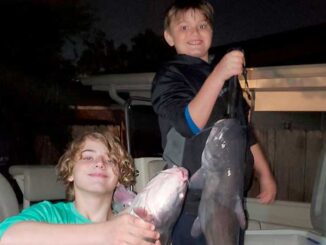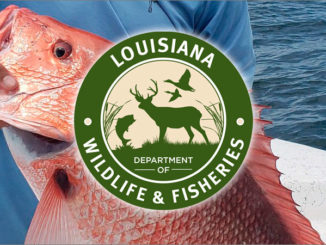
Few things are prettier to the uninitiated than that of a swarm of red snapper appearing in the clean, green water off the Louisiana coast.
When the sun is right — about a quarter of the way over the angler’s shoulder — and the smooth swells are the only thing interfering with the view, it’s a truly magnificent sight.
And it often ends up with the fortunate crew making quick work of a limit of the delectable fish.
Capt. Tommy Pellegrin of Custom Charters (985-851-3304) loves the sight as much as anyone, but is acutely aware that it’s simply a luxury when the fish behave like that.
“You’re going to have a lot better luck getting them to the surface when fishing shallow. When they’re in 100 feet or less, they’ll almost always come up,” said Pellegrin, adding that a little chum is generally all that’s needed if the fish don’t follow the first hook-ups to the surface.
“Anything 150 feet or more, and they’re going to stay deep,” Pellegrin said. “You’re going to be relying on your electronics.”
Fortunately, there’s a simple pattern for zeroing in on them, even without the benefit of a fishfinder: Take the depth of the water and fish about halfway down.
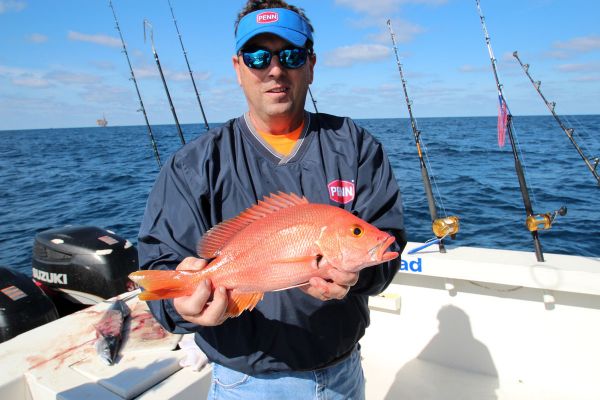
“That’s where they’ll generally be holding on a rig or even an open-water spot,” the captain said. “There will be a group of fish a third to halfway down, and then a second group on the bottom.
“The choice for me is easy. Do you want to drop it all the way to the bottom? Do you want to work those fish off the bottom, and then have to vent them?”
The right depth
Pellegrin said the biggest problem customers have in reaching the fish is similarly simple: They can’t count.
“I’ll tell everyone to let it go down 10 or 12 or whatever seconds,” he said. “People have a natural instinct to count too fast. I’ve seen it where five guys were on the boat and four hooked up right away. The fifth guy got nothing.
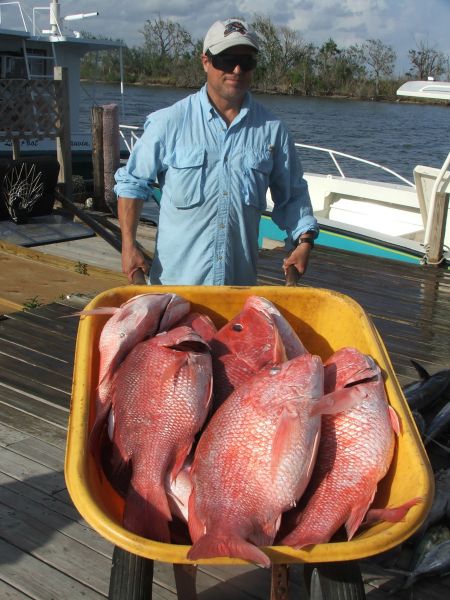
“I’ll watch him do it a second time and tell him to count, and I’ll tell him to stop. He’ll say ‘I counted to 20 that time’ when I told him to stop. And then I’ll say ‘Well, here, you count to 20 from now on’.”
He said it’s important to be pretty consistent with bait placement to get those hook-ups.
“Fish will come up five to 10 feet for a bait, but not more than that,” Pellegrin said. “And they’ll go down for a bait even less.
“If I see a school of fish, I’ll put them right in the middle of the school, so if I’m marking in between 40 and 60 feet, I’m counting them down to 50. The general rule with normal current is 12 to 15 seconds with 4 ounces of lead will put you at 50 feet.”
It’s not that hard
Pellegrin said 20-plus years of experience has taught him much about red snapper, but the one thing that amazes him is that during only one trip in his career has he ever had to resort to “techniques” to catch them.
“I call them ‘stupid red snapper,”’ he said. “They’ll always bite, just like a hardhead catfish. No matter if they’ve fed already, they’re going to eat if you put a bait in front of them.
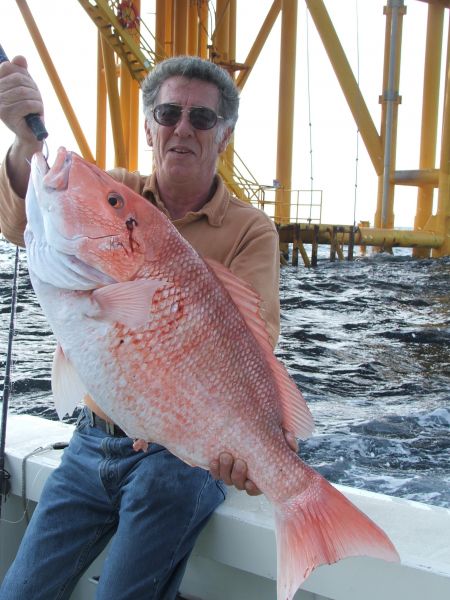
“Mangroves are moody, amberjack won’t always bite, but a red (snapper) won’t turn down a sardine or pogy. Just like a hardhead in Terrebonne Bay won’t turn down a shrimp on the bottom.”
Pellegrin theorizes that the American red snapper has actual feeding periods, but that they actually feed on the bottom and stage at the mid depths.
It’s just that they simply can’t pass up a meal.
“All of the scientific data and examining (of) their bellies reveals mostly crustaceans, king shrimp, crabs and all that,” he said. “That stuff is found on the bottom.”
Bigger fish
There’s little doubting the theory that the bigger fish on a structure are found higher in the water column. Pellegrin said that it’s the same reason that the big ones are often found off of the main structure.
“There aren’t many predators for a big red snapper out there in the open water,” he said. “They feel secure out more from the rig or even open-water hard bottoms. That’s not a safe place for a smaller fish, so they stick closer to the rig legs and the bottom.
“You find as you get farther and farther away from a rig, the marks on your electronics will become less-tightly packed. They’ll spread out and be bigger individual marks. That’s those bigger snapper.
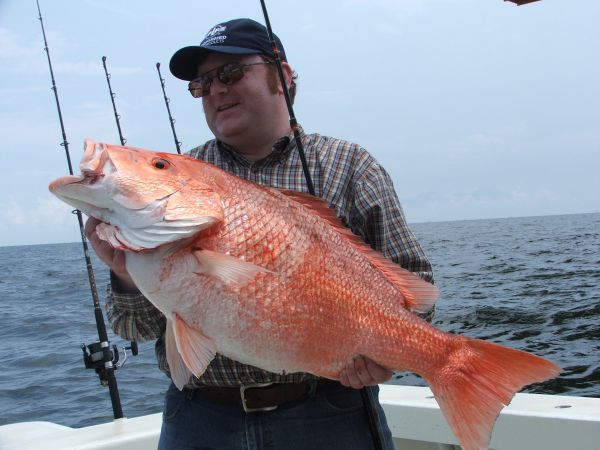
Pellegrin’s electronics of choice is a Lowrance HDS10, an amazing piece of machinery that can actually differentiate species of fish and different bottom types to a certain extent.
“The only thing I can’t figure out is how to tell an amberjack from a big snapper,” he said. “But it can absolutely tell a tuna from any kind of fish with hard scales.
“A bass fisherman showed me how he can tell a catfish — with no scales, of course — from a bass by the color and shape of the reading. It works great on identifying the red snapper.”
